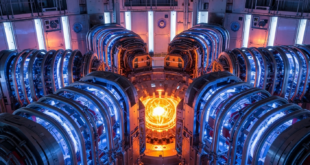Introduction
Emerging technologies in additive manufacturing are transforming the way we design and produce complex, multi-functional devices. Researchers at the University of Missouri have developed a groundbreaking 3D printing and laser process, known as the Freeform Multi-material Assembly Process, which enables the simplified fabrication of multi-material, multi-layered sensors, circuit boards, and even textiles embedded with electronic components—all with a single machine. This innovative approach integrates traditional 3D printing with precise laser processing and additional material deposition, opening up new possibilities for creating devices that are both structurally complex and functionally enhanced.
A Breakthrough in Integrated Manufacturing
The University of Missouri’s Freeform Multi-material Assembly Process represents a quantum leap in manufacturing technology, merging 3D printing with precision laser processing into a unified fabrication system. This innovative approach fundamentally transforms device prototyping by enabling simultaneous production of structural elements and integrated electronics within a single machine. Drawing inspiration from biological systems like electric eels – which seamlessly combine structural and electrical functions – the process achieves unprecedented material versatility while maintaining exceptional precision.
What truly distinguishes this technology is its ability to create complete, functional devices in one continuous operation. Researchers have demonstrated the capacity to reduce material waste by up to 90% compared to conventional electronics manufacturing methods, while dramatically accelerating the prototyping cycle from weeks to mere hours. The system’s biomimetic design philosophy allows for the creation of complex, multi-functional devices that were previously impossible or impractical to manufacture.
Technical Innovation: How the Process Works
The process begins with the fabrication of a basic structure using conventional 3D printing techniques with materials such as polycarbonate. Once this durable framework is established, the system switches to a laser module that selectively converts specific areas of the printed structure into laser-induced graphene. This conversion creates precise conductive pathways directly within the material, enabling the integration of sensors and circuits. Finally, additional functional materials are deposited to further enhance the device’s capabilities, allowing for the creation of integrated systems that can sense environmental conditions or perform complex electronic functions. The entire process, executed by a single machine equipped with multiple specialized nozzles, dramatically reduces the time, cost, and waste typically associated with multi-layered manufacturing.
The Freeform Multi-material Assembly Process integrates three distinct fabrication techniques through a sophisticated multi-nozzle apparatus. The process begins with structural foundation printing, where a conventional 3D printing extruder builds the device’s physical framework using standard thermoplastics like polycarbonate. This initial stage provides the dimensional stability required for subsequent processing while maintaining complete design flexibility.
Following the structural foundation, a precision laser transformation stage selectively converts specific areas of the printed structure into laser-induced graphene. This critical step creates conductive pathways and circuit elements with micron-level precision, enabling complex electronic functionality to be embedded directly within the printed framework. The laser’s exceptional accuracy allows for circuit patterns and features that surpass the capabilities of traditional PCB manufacturing methods.
The final stage involves functional material integration, where specialized dispensers deposit additional materials to enhance device capabilities. This may include semiconductor inks for active components, dielectric layers for insulation, or sensitive coatings for specialized sensing applications. The system’s true innovation lies in its ability to dynamically switch between these processes during fabrication, enabling truly integrated device production rather than sequential assembly of pre-made components
Inspiration and Advantages
Drawing inspiration from nature, the research team, led by doctoral student Bujingda Zheng and supported by associate professor Jian Lin, has developed this process by mimicking biological systems. For example, electrical eels combine structural components with specialized cells capable of discharging high voltage—a concept that inspired the integration of multiple materials into a cohesive 3D structure with embedded functionalities. This bio-inspired approach not only enables precise placement of different materials within a single component but also addresses longstanding challenges in the manufacturing of complex devices. Traditional methods, such as those used for fabricating printed circuit boards, are often costly, time-consuming, and environmentally unsustainable. In contrast, the Freeform Multi-material Assembly Process streamlines prototyping and reduces waste, promising a more efficient, versatile, and eco-friendly alternative.
Transformative Applications Across Industries
The potential applications for this technology are vast and transformative. In healthcare, the process could lead to the development of wearable sensors and medical devices that conform seamlessly to the human body, providing real-time monitoring in a compact and unobtrusive format. Additionally, the consumer electronics market stands to benefit from customizable robotics and smart textiles with integrated electronic components, which could revolutionize everyday interactions with technology.
This groundbreaking technology opens new frontiers across multiple industrial sectors, offering transformative potential in various applications. In electronics prototyping, it enables rapid iteration of circuit board designs with embedded components, allowing functional prototypes to be produced in hours instead of weeks. The significant cost reductions for small-batch production could democratize access to advanced electronics development.
The wearable technology sector stands to benefit tremendously from this innovation. The process enables seamless integration of sensors into clothing and accessories, facilitating the creation of custom-fit health monitoring devices. The unified construction approach enhances durability while maintaining comfort, addressing a critical challenge in wearable electronics development.
Environmental monitoring represents another promising application area. The technology enables creation of discreet sensor platforms that can mimic natural objects, allowing for distributed sensor networks in ecological research. These ruggedized designs can withstand harsh environments while providing accurate, real-time data collection capabilities.
In the medical field, the process facilitates production of patient-specific implants with embedded diagnostics and custom surgical tools with integrated sensing capabilities. The rapid production of research equipment could accelerate medical advancements by reducing prototyping timelines and costs.
In defense and industrial settings, embedding sensors within natural-looking structures—such as rock or seashell analogs—could facilitate covert environmental monitoring or robust field-deployable devices.
Advantages Over Conventional Manufacturing
The Freeform Multi-material Assembly Process offers numerous compelling advantages that position it as a superior alternative to conventional manufacturing methods. The time efficiency benefits are substantial, with complete devices being fabricated in single operations that eliminate traditional assembly steps. This consolidation enables design-to-prototype cycles measured in hours rather than weeks, dramatically accelerating product development timelines.
From a cost perspective, the technology offers significant reductions through multiple mechanisms. The minimal equipment requirements contrast sharply with traditional electronics manufacturing setups that require numerous specialized machines. Material waste is dramatically reduced through precise deposition and laser conversion, while the energy-efficient nature of the process further contributes to cost savings.
The design freedom afforded by this technology is unparalleled in conventional manufacturing. It enables true 3D circuit integration rather than the planar limitations of traditional PCBs, allowing for complex internal geometries and innovative multi-functional material combinations. This flexibility opens new possibilities for product design and functionality.
Environmental benefits form another crucial advantage, with the process dramatically reducing chemical waste associated with traditional electronics manufacturing. The energy-efficient production methods and sustainable material usage patterns align with growing demands for greener manufacturing solutions across industries.
Commercialization Pathway and Future Development
Supported by the National Science Foundation’s Advanced Manufacturing program and I-Corps initiative, this transformative technology is progressing rapidly toward commercialization. Current development efforts focus on several key areas of process optimization, including expanding material compatibility to accommodate an even wider range of functional materials. Researchers are working to increase production speed while simultaneously enhancing resolution and accuracy to meet industrial requirements.
The team is developing application-specific solutions tailored to various industry needs. These include specialized configurations for biomedical applications that require particular material properties or sterilization capabilities, as well as industrial-grade implementations designed for rugged use environments. The modular system architecture allows for customization to meet diverse application requirements.
Scaling strategies form another critical development focus, with researchers working on automated material handling systems and integrated quality control mechanisms. These advancements will facilitate the technology’s transition from laboratory prototype to practical manufacturing solution. The research team, led by Dr. Jian Lin, anticipates initial deployment to research institutions and corporate R&D facilities, with subsequent expansion into small-scale production environments as the technology matures
By enabling companies to produce prototypes in-house, this technology promises to significantly shorten fabrication times and reduce production costs. As industries continue to seek innovative solutions for rapid prototyping and customized manufacturing, this breakthrough process is set to become a key enabler in the next generation of multi-functional device fabrication, driving advancements across healthcare, defense, consumer electronics, and beyond.
The Future of Integrated Device Fabrication
The Freeform Multi-material Assembly Process represents more than just another manufacturing technology – it fundamentally reimagines how we conceptualize and create functional devices. By eliminating the traditional barriers between structural fabrication and electronic integration, this innovation promises to democratize advanced device prototyping across industries and organization sizes.
The technology’s potential to accelerate innovation cycles is particularly significant, as it enables rapid iteration and testing of complex, integrated designs. This capability may give rise to entirely new product categories that leverage the unprecedented design freedom offered by the process. The sustainable manufacturing practices inherent to the technology align with global trends toward greener production methods.
Looking ahead, we may see this technology evolve from a prototyping tool to a viable production method for specialized devices, potentially revolutionizing sectors from consumer electronics to medical technology. The ability to create devices with seamlessly integrated structural and electronic functions could enable breakthroughs in fields ranging from flexible electronics to bio-integrated devices.
For researchers and industry professionals interested in exploring this technology, the complete technical details are available in the Nature Communications publication. The development team is actively seeking collaboration opportunities to further advance and apply this transformative manufacturing approach, which stands poised to redefine the boundaries of device fabrication.
 International Defense Security & Technology Your trusted Source for News, Research and Analysis
International Defense Security & Technology Your trusted Source for News, Research and Analysis



